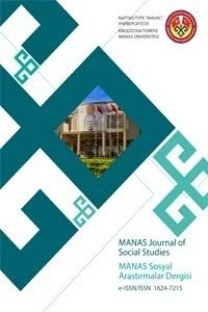HAVAYOLU ŞİRKETLERİNDE FİNANSAL BİR ARAÇ OLARAK HEDGING YÖNTEMİNİN KULLANILMASI
USING HEDGING METHOD AS A FINANCIAL TOOL IN THE AIRLINE COMPANIES
___
- Allayannis, G., Weston, J.P. (2001). The Use of Foreign Currency Derivatives and Firm Market Value, Review of Financial Studies, 14: 243-276.
- Bailey, J. (2007). Southwest Airlines Gains Advantages by Hedging on Long-Term Contracts, The New York Times, (28 Kasım).
- Berghöfer, B., Lucey, B. (2 014). Fuel Hedging, Operational Hedging and Risk Exposure-Evidence from the Global Airline Industry, International Review of Financial Analysis, 34: 124-139.
- Bertus, M., Godbey, J., Hilliard, J. E. (2009). Minimum Variance Cross Hedging Under Mean-Reverting Spreads, Stochastic Convenience Yields, and Jumps: Application to The Airline Industry, The Journal of Futures Markets, 29( I. 8): 736-756.
- Bijan V., Fleming, K., Mackay, L. (2010). Fuel Hedging And Risk Management: Methodology And Practice, UK: MPG Books Group.
- Carter, D. A., Rogers, D. A., Simkins, B. J. (2006). Does Hedging Affect Firm Value? Evidence from the US Airline Industry, Financial Management, 35( I.1): 53-86.
- Çonkar, K., Ata, H. A. (2002). Riskten Korunma Aracı Olarak Türev Ürünlerin Gelişmiş Ülkeler ve Türkiye’de Kullanımı, Afyon Kocatepe Üniversitesi, İ.İ.B.F. Dergisi, 4(2): 1-18.
- Daigler, R. T. (1984). Financial Futures and Options Markets, Harper Collins Publishers.
- Doganis, R. (2002). Flying Off Course: The Economics of International Airlines, 3rd edition, Routledge: London and NY.
- EIA. (2015). Kaynak: http://www.eia.gov/forecasts/steo/report/global_oil.cfm, (Erişim Tarihi: 06.08.2015).
- Forbes. (2011). Southwest Airlines Flies to $14 Unless Hedging Losses Eat Profits, Kaynak: https://www. forbes.com/ sites/ greatspeculations/ 2011/06/30/southwest-airlines-flies-to-14-unless-hedging-losseseat- profits/#a974c0a703e3 (Erişim Tarihi: 10.10.2014)
- Gardiner, B. (2012), Steep Fuel Prices Driving Push for Efficient Aircraft, The New York Times, (08 Temmuz).
- Graham, J. R., Rogers, D. A. (2000). Does Corporate Hedging Increase Firm Value? An Eempirical Analysis?, ResearchGate Article February 2000, Kaynak: http://www.researchgate.net/publication/228382781_Does_corporate_hedging_increase_firm_value_An _empirical_analysis, (Erişim Tarihi: 25.09.2015).
- Graham, J. R., Rogers, D. A. (2002), Do Firms Hedge in Response to Tax Incentives?, Journal of Finance, 57: 815- 839.
- Gün, M. (2008). Havacılığın Devleri de Batıyor, Kaynak: http://www.zaman.com.tr/ekonomi_havaciligindevleri- de-batiyor_740767.html (Erişim Tarihi: 10.05.2014).
- Konuk, F. (2018). Financial and Performance Analysis of Food Companies: Application of TOPSIS and DEA, Manas Journal of Social Studies, 7(3): 381-390.
- Korkmaz, T. (1999). Hisse Senedi Opsiyonları ve Opsiyon Fiyatlama Modelleri, Elkin Kitapevi Yayınları: Bursa.
- Kristjanpoller, W. D., Concha, D. (2016). Impact of Fuel Price Fluctuations on Airline Stock Returns, Applied Energy, V. 178, pp: 496–504.
- Lim, S. H., Hong, Y. (2014). Fuel Hedging and Airline Operating Costs, Journal of Air Transport Management, V.36, pp: 33-40.
- Morrell, P., Swan, W. (2006). Airline Jet Fuel Hedging: Theory and Practice, Transport Reviews, V. 26, I. 6, pp.713–730.
- Öncü, M. A., Çömlekçi, İ., Coşkun, E. (2010) Havayolu Şirketlerinin Uyguladıkları Finansal Stratejiler Üzerine Bir Araştırma, Ekonomik ve Sosyal Araştırmalar Dergisi, Cilt:6 (2), ss. 27-58.
- Özcan, V. (2012). Hedge Fonları Ne İşe Yarar?, Kaynak: http://t24.com.tr/yazarlar/vedat-ozdan/hedge-fonlar-neise- yarar,4743 (Erişim tarihi: 10.05.2014).
- Reuters, 2004. Continental Raises Domestic Fares, Cites Fuel Costs, Reuters, (February 27).
- Sakarya, B. (2008). Küresel Finansal Yapı ve 2007 Yılı Dalgalanmaları, Bankacılık Düzenleme ve Denetleme Kurumu, Strateji Geliştirme Daire Başkanlığı, Çalışma Tebliği, Sayı: 2, ss. 1-41.
- Stevens, R. E., Loudon, D. L., Oglesby, D. W. (2007). Concise Encyclopedia of Investing, Hawort Press: New York.
- Stoll, H.R., Whaley, R.E. (1993). Futures and Options: Theory and Applications, South-Western Publishers: USA.
- TREDALL (2014). Kaynak: http://tradeall.com/pdf/Egitim.pdf, (Erişim Tarihi: 08.05.2014).
- Treanor, S.D., Carter, D.A., Rogers, D. A., Simkins, B. J. (2013). Operational and Financial Hedging: Friend or Foe? Evidence from the U.S. Airline Industry, Journal of Accounting and Finance, V.13, I.6, pp.64-91.
- Treanor, S. D., Rogers, D. A., Carter, D. A., Simkins, B.J. (2014). “Exposure, Hedging, and Value: New Evidence from the U.S. Airline Industry, International Review of Financial Analysis, V. 34, pp: 200-211.
- Turner, P. A., Lim, S. H. (2015). Hedging Jet Fuel Price Risk: The Case of U.S. Passenger Airlines, Journal of Air Transport Management, 44-45: 54-64.
- Yeğin, F. (2010). Petrol Fiyatlarını Etkileyen Faktörler, 2010 Araştırma Raporu, Sermaye Piyasası Kurulu Araştırma Dairesi Yayını, Kaynak: http://www.spk.gov.tr/yayingoster.aspx?yid=1018&ct=f&action=displayfile (Erişim Tarihi: 09.05.2014).
- www.delta.com (Erişim Tarihi:05.06.2014).
- www.inflationdata.com (Erişim Tarihi:20.09.2017).
- www.wikinvest.com/stock/United_Airlines_(UAUA) (Erişim Tarihi: 05.06.2014).
- Zou, B., Elke, M., Hansen, M., Kafle, N. (2014). Evaluating Air Carrier Fuel Efficiency in the US Airline Industry”, Transportation Research Part A, 59: 306-330.
- ISSN: 1694-7215
- Yayın Aralığı: 4
- Başlangıç: 2001
- Yayıncı: KIRGIZİSTAN-TÜRKİYE MANAS ÜNİVERSİTESİ
BİREY-ÖRGÜT UYUMUNUN İŞ TATMİNİ ÜZERİNE ETKİSİ: SAĞLIK KURUMLARINDA BİR ARAŞTIRMA
TOLGA GÖK, CEMAL İNCE, ERKAN AKGÖZ
EMİN ARSLAN, HAKAN KENDİR, FATİH TÜRKMEN
HAVAYOLU ŞİRKETLERİNDE FİNANSAL BİR ARAÇ OLARAK HEDGING YÖNTEMİNİN KULLANILMASI
İŞGÖREN TATMİN DÜZEYİNİN HİZMET KALİTESİNE ETKİSİ: BİŞKEK-KIRGIZİSTAN ARAŞTIRMASI
KIRGIZ TOPLUMUNDA YAŞLILIK VE YAŞLININ SOSYAL STATÜSÜ
TÜRKİYE’DEKİ BLACK FRIDAY ETKİNLİĞİNİN TÜKETİCİ SİNİZMİ BAĞLAMINDA BİR DEĞERLENDİRMESİ
ÖZLEM AKGÜÇ ÇETİNKAYA, EMİNE CENG
ÖĞRETMEN ADAYLARININ AKADEMİK İŞLERİN ERTELENMESİ SORUNUNA YÖNELİK ÇÖZÜM ÖNERİLERİ
